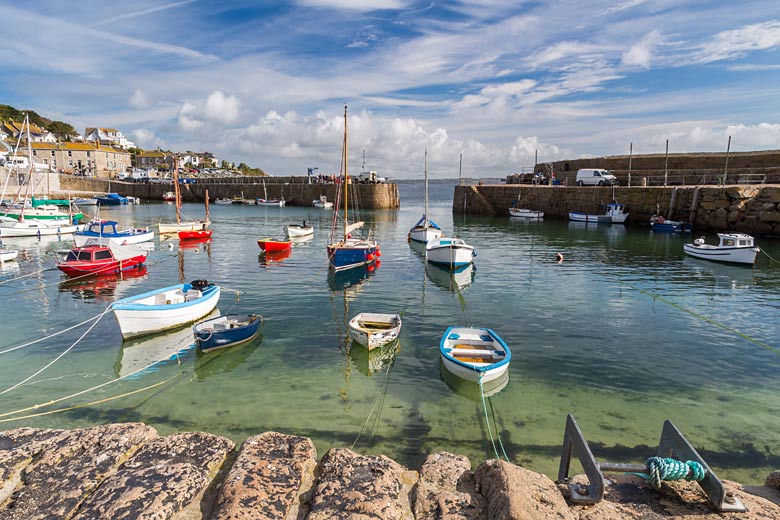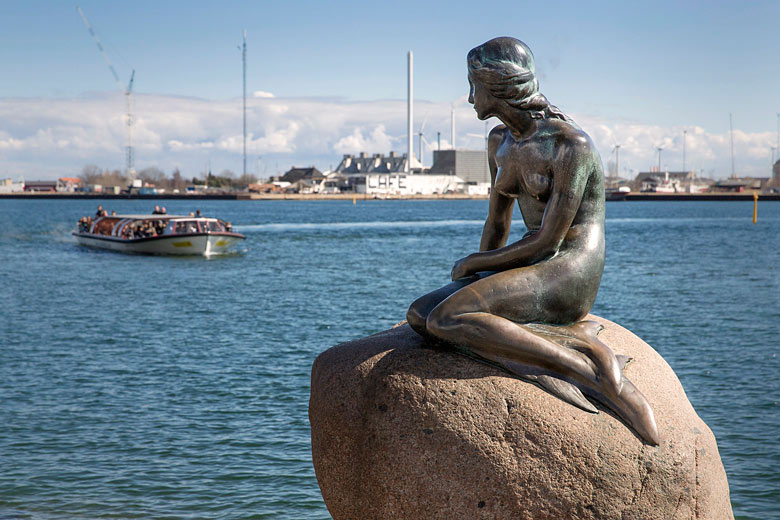10 of England's most captivating castles
Nowhere does history come alive more than within the crumbling ruins of a mighty medieval castle.
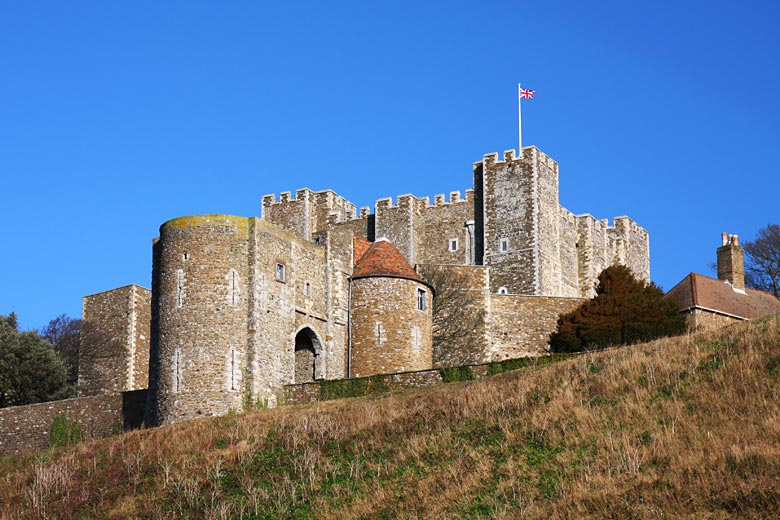
Here, we're taking a peek at some of England's most remarkable fortifications, all of which have a familiar tale of architectural ingenuity interwoven with battles, powerful owners, royal residents, renovations and eventual decline and ruin.
Exploring England's castles: check out the latest English Heritage membership offers* and begin collecting castles today.
Middleham Castle, North Yorkshire
Walk in the footsteps of a young Richard III at Middleham Castle* in Wensleydale. Built in 1190, it was acquired by the Neville family in 1270. If you know your Wars of the Roses, the name Richard, Earl of Warwick, aka "Warwick the Kingmaker", will be ringing bells.
It was here at Middleham that he lived with his family and where his cousin, the future Richard III, came under his guardianship. It's believed Richard was resident for a number of his teenage years during the 1460s, learning to become a well-trained knight or soldier. It's also thought that this was when Richard first met the earl's daughter, Anne Neville, who would become his wife.
Although dating from the 12th century, much was added around the central keep, gradually turning the castle from a defensive fortification into a luxury palatial residence. After Richard III's death at the Battle of Bosworth in 1485, Middleham remained royal property until it was sold during the reign of James VI of Scotland, who was also James I of England.
It gradually fell into disrepair from the 17th century onwards before being listed as a Grade I building in 1970 and taken under the wing of English Heritage in 1984.
Why visit?
If you've ever been gripped by the drama surrounding the Wars of the Roses, then Middleham Castle in the Yorkshire Dales is an essential place to visit. That it remains so intact despite the loss of its roof is what makes it such a fabulous place to explore as you wind around its passageways, turrets, chambers and great halls.
Head up to the viewing platform for sweeping views of the Dales and remember to take a picnic to enjoy in the grounds along with your four-legged friend, as Middleham Castle is also dog-friendly*.
Planning to visit England's castles? Go prepared when you read our complete guide to the weather in England year-round.
Restormel Castle, Cornwall
The circular masterpiece that is Restormel Castle* may not be the most well-known castle in England but it's certainly one of the most remarkable. Perched atop a grassy mound close to the River Fowey, its distinctive design, which dates from the late 13th century, marks it out as a place full of character and intrigue.
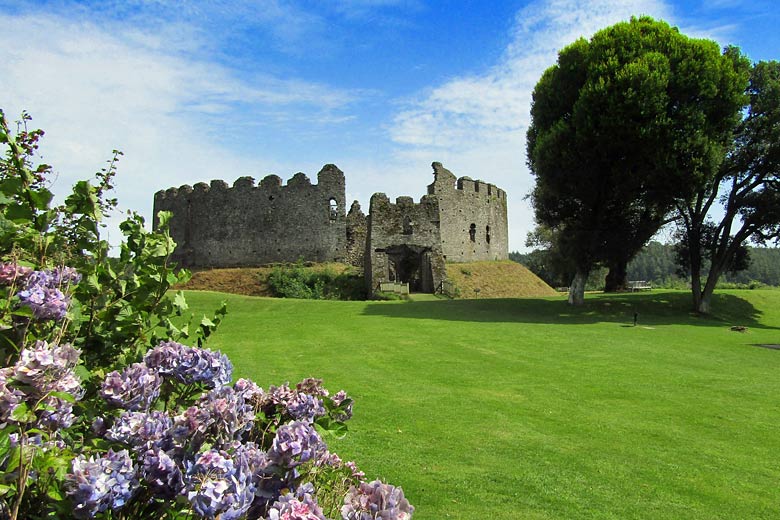
It changed hands numerous times with former owners including Simon de Montfort for a brief period in 1265 and Edward, The Black Prince in 1337. It even had a small part in the Civil War, when in 1644, a Parliamentarian army was garrisoned there and a battle was fought for control of the castle, which caused immense damage to the structure. This was the last official act of Restormel as a fortified castle.
Following this, it gradually became a local ruin and tourist attraction, even visited by Queen Victoria and Prince Albert in 1846. What was, for a time, seen as a fine medieval country retreat and one of four castles under the control of the Duchy of Cornwall, was ultimately left to ruin and given to the state in 1925.
Why visit?
The relatively intact shape of this castle is a large part of what makes it interesting. An almost complete circle, it has a huge open courtyard and rooms full of fireplaces and large windows.
Do climb the stone staircase to the 'wall walk' on the first floor, not only for a brilliant bird's eye perspective on the castle ruins - and surrounding countryside - below. Pack a picnic and take your pet to this ancient dog-friendly site.
Dover Castle, Kent
Dover Castle* has an incredible story to tell. Owing to its strategic location overlooking the Strait of Dover, the closest crossing between England and the continent, it's seen it all throughout the past 800 years.
One of Britain's oldest major castles, dating from the 12th century, it sits on the remains of an Iron Age hillfort with the ruins of a Roman lighthouse and Anglo-Saxon chapel within its medieval walls. Beneath the surface, a network of tunnels dug into the chalk in the 13th century was later massively expanded and used during both World Wars and the Cold War.
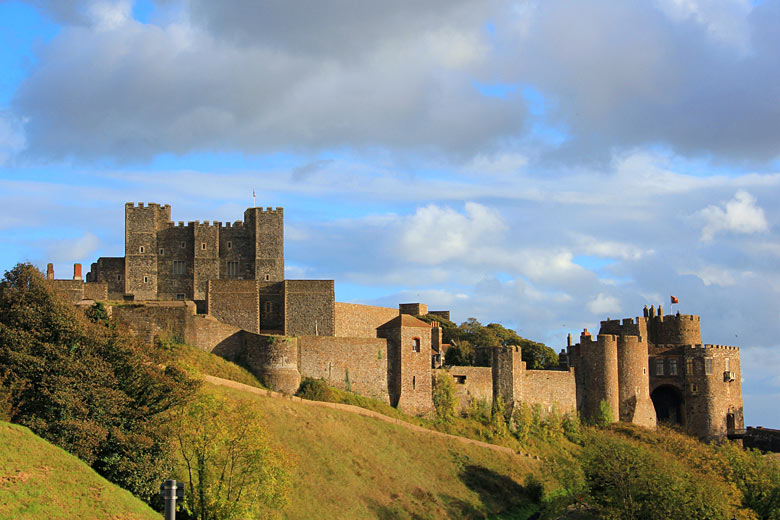
The castle we recognise today was largely built under Henry II between 1179 and 1189. He spent a great deal constructing the castle, the remnants of which include the inner bailey and towers, part of the outer bailey and the enormous great tower at its centre.
Successive royals and the military adapted the castle through the centuries. As such, it has donned many hats from a royal palace and artillery fortress to 17th-century military prison, Georgian infantry barracks, 20th-century secret naval base and a nuclear bunker. At its core, Dover Castle has always been vital for England's coastal defence.
Why visit?
As well as simply experiencing the magnitude of this impressive castle, you'll walk through hundreds of years of English royal and military history, from the ancient past to modern times.
One minute you're picturing medieval life in the lavish great tower, the next you're underground seeing how the Allies worked from the tunnels to plan Operation Dynamo and the great D-Day deception.
Dover Castle is a full family day out (dogs welcome in the grounds, too); there is something for all ages not to mention periods of interest. Don't miss the battlement walk around the walls and remember to check the calendar of events* as there's often something exciting happening at Dover Castle.
Norham Castle, Northumberland
Situated on a grassy bank on the English side of the River Tweed, Norham Castle*, close to Berwick-upon-Tweed, played a significant role in defending northern England from invading Scots for some 450 years.
It was considered to be one of the most important defensive positions in a chain of fortifications that stretched across this much-fought-over region. Often under attack, it's said to have been besieged at least nine times (one of which, led by Robert the Bruce no less, lasted for a year) and captured four times, although control was usually quickly regained by the English.
James IV of Scotland, who briefly occupied the castle in 1513, inflicted some serious cannon fire damage on the castle's keep and walls. Although rebuilt with a focus on turning it into a fortress for artillery, by 1596, Elizabeth I had decided against spending more on Norham and, following the unification of the Scottish and English crowns in 1603, it began to fall into disrepair.
After centuries of neglect, it landed in state hands in 1923.
Why visit?
The location of Norham Castle means it not only has a lively history including well-known characters but is beautifully situated. The ruins give a good indication of its size while the remaining great tower shows where various additions and changes were made to the structure between the 12th and 16th centuries.
As well as being dog friendly, Norham Castle is close to other sites of great interest during this period such as Etal Castle and Berwick-upon-Tweed Castle and Ramparts.
Tintagel Castle, Cornwall
Soak in the scenery of the somewhat incongruous Tintagel Castle*, where half the fun of visiting is getting to these coastal ruins in the first place.
Found high on the craggy peninsula of Tintagel Island, this 13th-century castle is once again connected to its medieval gateway on the mainland via the Tintagel Footbridge, which opened in 2019. This spectacular construction gives you a great sense of the castle's location as well as views out to sea and down to the rocky ravine below
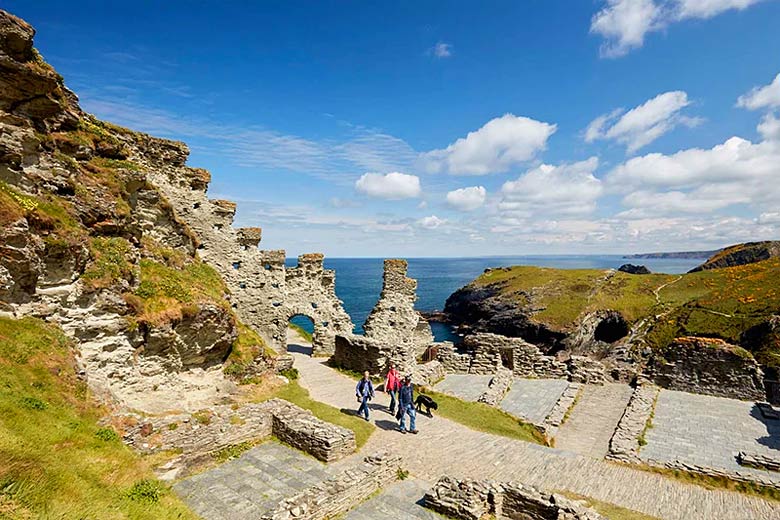
As you enter the castle, you'll pass the remains of an early medieval settlement, once home to Cornish rulers who traded local tin for imported goods. Stroll among the house foundations that were built between the 5th and 7th centuries CE.
Travel through the centuries with the outdoor displays that walk you through Richard, the Earl of Cornwall's great hall while imagining what life would have been like in the embrace of the stone castle on this exposed headland.
As well as being home to many powerful Cornish kings, Tintagel Castle sings with myth and legend - after all, it's said King Arthur was conceived here - and it's easy to see why writers and artists have long been inspired by this wild settlement.
Why visit?
The dramatic location of Tintagel is what brings people back again and again. From the ruins and King Arthur's Statue up top, down the pathways to the beach and Merlin's Cave below, there's much to explore.
Grab a coffee at the Beach Cafe and take your dog along on your journey through one of Cornwall's most important historic attractions.
Carisbrooke Castle, Isle of Wight
Carisbrooke Castle* is thought to rest on top of Roman, possibly even pre-Roman, and Anglo-Saxon ruins, proving that its position close to the heart of the Isle of Wight has long been revered.
Impressive without dominating its surroundings, Carisbrooke Castle is a motte-and-bailey design, dating in parts from the 1100s with many additions over the following centuries.
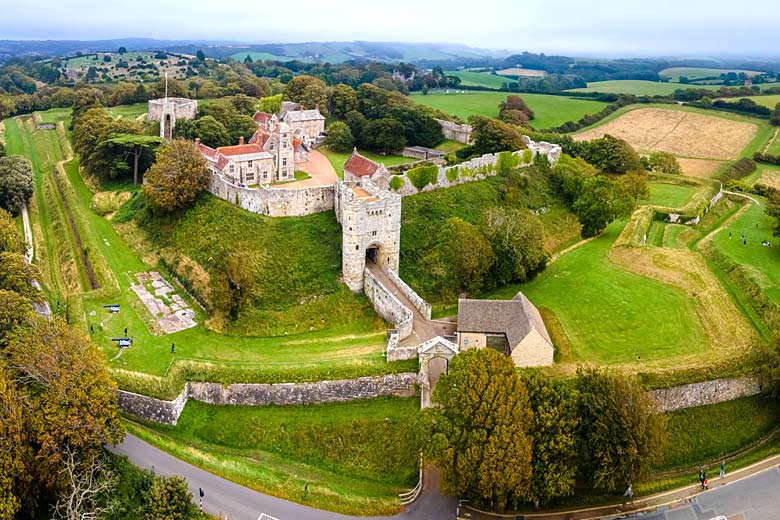
The castle is a mix of ruins, including the high Norman keep, medieval great hall and great chamber, and well-maintained rooms, mainly because it was the official residence of the Governor of the Isle of Wight well into the 20th century.
This role was given to Princess Beatrice, daughter of Queen Victoria, who moved into the castle in 1913 and whose legacy can be seen in the colourful Prince Beatrice Garden.
The castle is most well known, however, as the prison of Charles I for 14 months before his execution in 1649. Initially confined to the pleasant Constables' Lodgings, following his disastrous escape attempt when he was found wedged between his window bars, Charles was later housed in less salubrious accommodation.
The upper part of the castle, which dates from the 16th century, is where you'll find the Carisbrooke Castle Museum, predominantly dedicated to the story of Charles I.
Why visit?
As the Isle of Wight's main historic castle, Carisbrooke should be added to any itinerary. Be sure to time your visit with the daily demonstrations from the resident donkeys who draw water from the deep well using a 16th-century tread wheel, just as their ancestors have done for centuries.
Also make time to climb the steps to the top of the keep for the wall walk. As well as the grounds welcoming dogs, you'll find cake and a cuppa in the Castle Tearoom.
Orford Castle, Suffolk
Step inside one of England's best-preserved keeps, or fortified towers, at Orford Castle* on the Suffolk coast. The curious polygonal-shaped keep was constructed by Henry II in the mid-to-late 12th century and was originally enveloped in a high wall.
Sadly, it only had a brief century and a half in the spotlight as it was sold by King Edward III in 1336. From then it succumbed, like many medieval castles, to neglect; the wall collapsed and the stone was sold or stolen although the keep was maintained to some degree as it was a recognised landmark for ships.
Subsequent private owners rediscovered its architectural appeal and from the late 18th century onwards, turned it into a fine summer house, even furnishing the Upper Hall in the late 19th century. After buying the property in 1928, local MP, Sir Arthur Churchman, gifted Orford Castle to the nation.
Why visit?
What makes Orford Castle special is that it is so intact, allowing you to get a real feel for what it may have been like when first constructed and as its use evolved through the centuries.
Its shape lends itself to a winding formation of hallways that lead to a chapel, kitchen and chambers. Start in the basement, working your way through the lower and upper halls (the latter home to the excellent Orford Museum displaying local artefacts dating from Roman times) to the rooftop where you will get a splendid view of the coastline.
Kenilworth Castle, Warwickshire
Make for the warming hues of Kenilworth Castle*'s new red sandstone ruins and you'll be transported through the ages as you learn about its evolution from Norman fortification to Lancastrian stronghold and Tudor palace.
The big 12th century keep, three floors high with 14-foot-thick walls, remains an unmissable feature today. Around this further buildings and fortifications were added over the centuries, aiding skirmishes such as a six-month-long siege, said to have been the longest in medieval English history, in 1266.
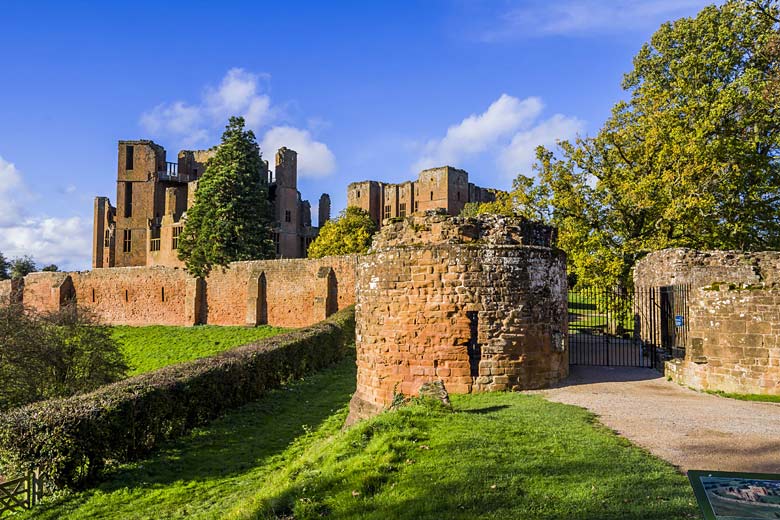
It was John of Gaunt's magnificent 14th-century great hall and Robert Dudley, Earl of Leicester's alterations in the 16th century that shifted Kenilworth into palatial territory, truly cementing its place as one of the finest symbols of wealth and power in England.
Of course, Dudley had his reasons for such elaborate spending on extensions. It was during this time that he sought the affection of Elizabeth I and upgraded the castle so she would visit on her royal tours - which she did, numerous times, staying in exceptionally lavish specially-built private rooms.
Kenilworth took a bit of a back seat after the Tudor era and, in the 17th century, it was deliberately damaged during the Civil War by the Parliamentarians.
Why visit?
If you're into the Elizabethan period, Kenilworth oozes historic romance. Climb the 18-metre-high platform inside one of the towers to see the beautiful architecture of Elizabeth's private rooms, including the huge windows, fireplaces and intricate stonework on display.
You'll get a further fix in the immaculately landscaped Elizabethan Garden, while a walk around the exterior of the castle yields its own rewards. Dogs are welcome and the Tudor timber-framed Stables Cafe is where to pitstop.
Barnard Castle, County Durham
The sight of Barnard Castle* looming large over the fast-flowing River Tees remains a formidable one. Another 12th-century creation, the founding family name of Balliol will no doubt be familiar to anyone who knows their Scottish history.
Following the abdication of John Balliol in 1296, the Bishops of Durham, responsible for ensuring peace along the Anglo-Scottish border ultimately took ownership of the castle, before it was given to the Earl of Warwick in the early 1300s.
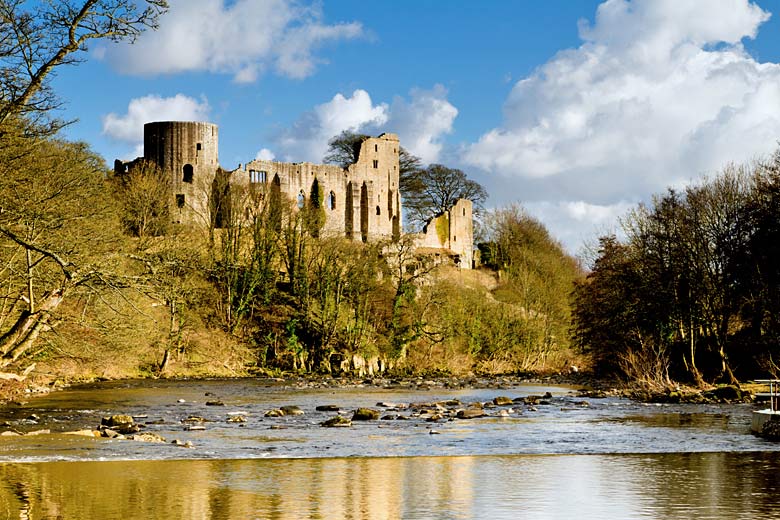
It's at this point that Barnard Castle links up with our old friend, Middleham Castle. It, too, became part of the Neville family estate, through marriage to the Earl of Warwick, in the 15th century. In fact, during the Wars of the Roses, it's said that it was a firm favourite of Richard, Duke of Gloucester (the future Richard III), who had by this time married Anne Neville.
It remained Neville property, undergoing various improvements and expansions until the failed 1569 Rising of the North, in which Charles Neville, 6th Earl of Westmorland was implicated, and the castle was taken from the seemingly treacherous Nevilles.
Why visit?
The peak of Barnard Castle's story sees powerful medieval nobles and royalty mingling within its stone walls. Anyone interested in the Wars of the Roses and overlapping Scottish history will want to step inside the castle's shell.
Peer down through the windows of the large 12th-century circular tower to the Tees Gorge below and wander around the 14th-century great hall and great chamber. Meanwhile, the eagle-eyed should look for Richard III's emblem of a boar carved above the inner ward. And, like every good castle, dogs are welcome.
Scarborough Castle, North Yorkshire
The scenic seaside town of Scarborough in North Yorkshire has long been under its castle's watchful eye - and it's easy to see why. The long stone walls snake the length of the headland, rightfully giving the impression of a sprawling hilltop fortress, perfectly positioned between the north and south bays.
As protector of the local port and coastline, as well as of the north of England against the Scots and threats from the continent, the position of Scarborough Castle* has always been highly valued strategically.
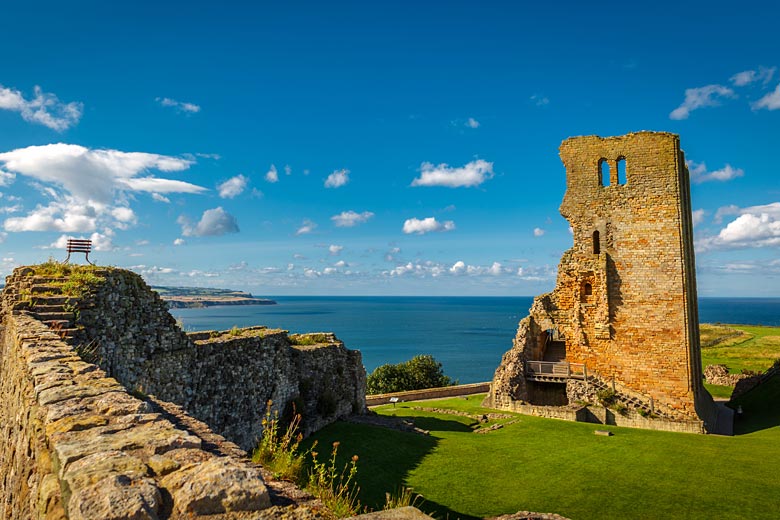
In a familiar tale, there are clues to Iron Age and Roman settlements but its zenith came in the 12th and early 13th centuries when it was considerably developed by Henry II and, later, King John.
The former rebuilt the original wooden castle with stone, including the tall keep visible today. The latter, whose motives as an unpopular king were heavily geared more towards protection, fortified Scarborough Castle, building the walls, among other defences.
From scoundrels such as besieging Parliamentarians during the Civil War to rampaging Jacobites and the Imperial German Navy, who shelled the castle and town during WWI, this castle is arguably the most captivating of them all.
Why visit?
The dramatic position of Scarborough Castle, surrounded by steep cliffs dropping into the sea makes it a joy to visit and a reward worth the hike up to the hilltop castle from the town.
Take a picnic and your most-welcome dog to make the most of the green grassy grounds while admiring the three-storey keep and views from this exceptional vantage point on high.
Keen to tick off some of these historic castles? See the latest deals on English Heritage membership to gain unlimited free entry all year round.
More about England
- Overview
- Best time to visit
- Weather by month
- 5-day weather forecast
- Destinations
- Travel advice
- Deals & discounts
England by month
Jan Feb Mar Apr May Jun Jul Aug Sep Oct Nov Dec
Explore holidays in the sun for less
- Beach holidays
- Family holidays
- City breaks
- Summer holidays
- Winter sun holidays
- Holiday offers
- Top travel brands
- Airlines & flights
- Discount hotels
- Airport parking deals
- TUI
- Jet2holidays
- easyJet holidays
- Love Holidays
- January sales
Airport parking
- Manchester Airport
- Stansted Airport
- Bristol Airport
- Luton Airport
- Birmingham Airport
- Edinburgh Airport
- Gatwick Airport
- Glasgow Airport
- Newcastle Airport
Airport lounges
- Manchester Airport
- Birmingham Airport
- Bristol Airport
- Edinburgh Airport
- Glasgow Airport
- Heathrow Airport
- Newcastle Airport
- Stansted Airport
- Gatwick Airport
Be inspired
Get your weekly fix of holiday inspiration from some of the world's best travel writers plus save on your next trip with the latest exclusive offers
We promise not to share your details



 Places to visit
Places to visit







